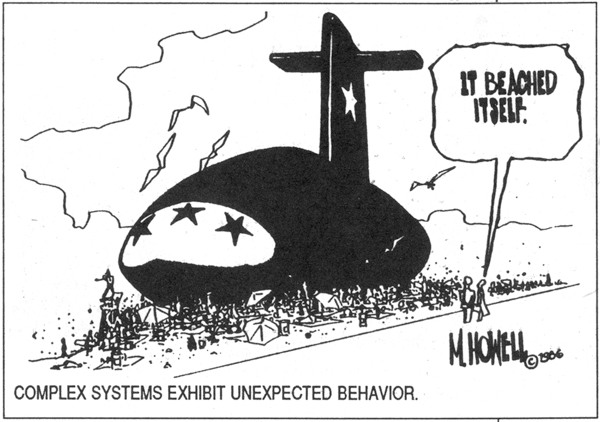Systemantics

How systems work
Originally published as Systemantics, the pun in the title carries the important message that systems have “antics” — they act up, misbehave, and have their own mind. The author is having fun with a serious subject, deciding rightly that a sense of humor and paradox are the only means to approach complexity. His insights come in the form of marvelously succinct rules of thumb, in the spirit of Murphy’s Law and the Peter Principle. This book made me 1) not worry about understanding a colossal system — you can’t, 2) realize I can change a system — by starting a new one, and 3) avoid starting new systems — they don’t go away.
The lesson is that whatever complexity you are creating or have to work with — a website, a company, a robot, a tribe, a platform — is a system that will over time exhibit its own agenda. You need to understand the basic laws of systems, which this perennial book (now in its third edition) will cheerily instruct you.
05/21/20Excerpt
*
*
A complex system that works is invariably found to have evolved from a simple system that worked. The parallel proposition also appears to be true: A complex system designed from scratch never works and cannot be made to work. You have to start over, beginning with a working simple system.
*
We begin at the beginning, with the Fundamental Theorem: New systems mean new problems.
*
The system always kicks back — Systems get in the way — or, in slightly more elegant language: Systems tend to oppose their own proper functions.
*
Systems tend to malfunction conspicuously just after their greatest triumph. Toynbee explains this effect by pointing out the strong tendency to apply a previously successful strategy to the new challenge. The army is now fully prepared to fight the previous war.
(This is a Cool Tools Favorite from 2014 — editors)
The Systems Bible (3rd Edition of Systemantics) 2003, 316 pages








